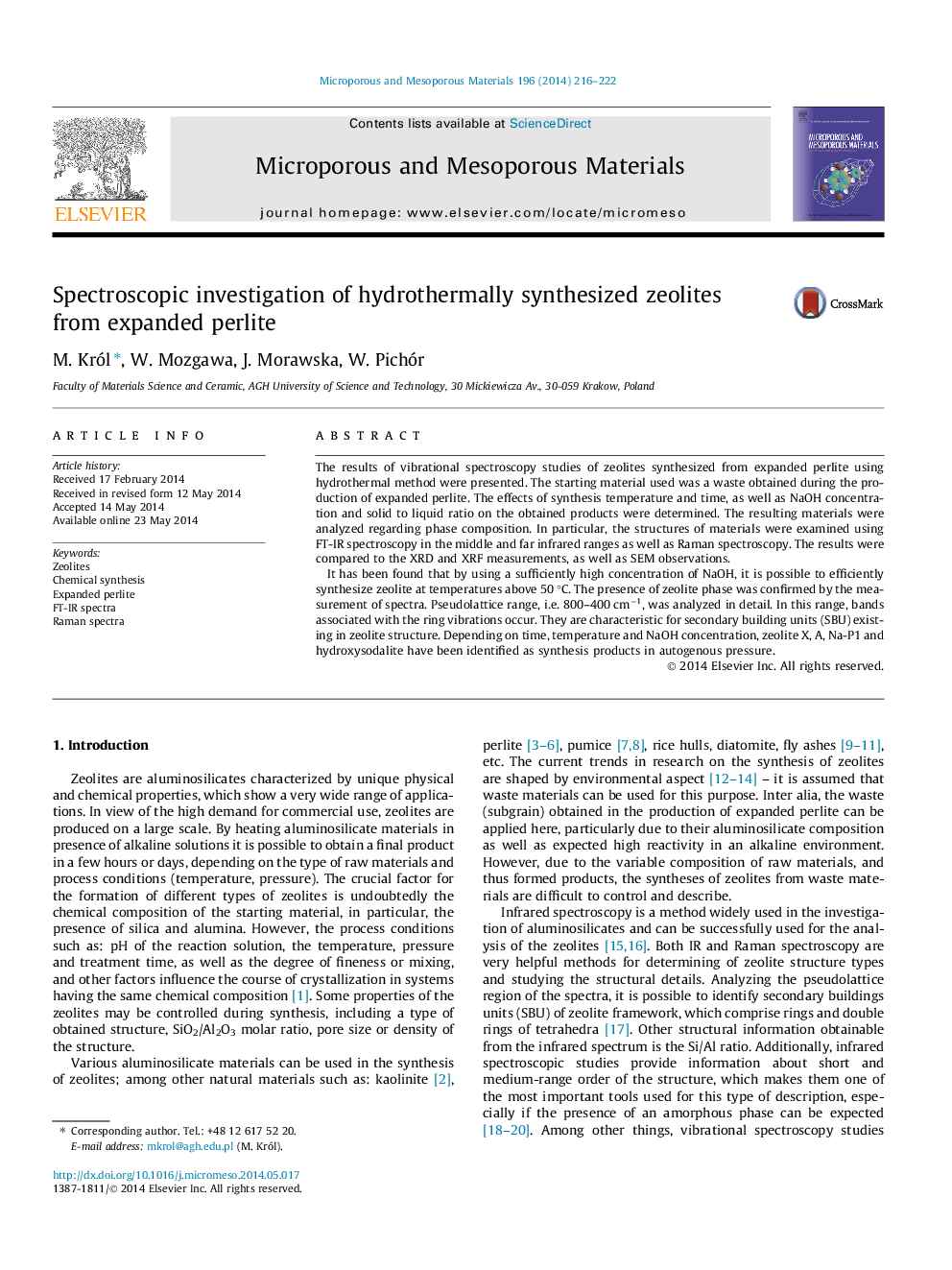| Article ID | Journal | Published Year | Pages | File Type |
|---|---|---|---|---|
| 73007 | Microporous and Mesoporous Materials | 2014 | 7 Pages |
•We examine the synthesis of zeolites from expanded perlite waste.•The results show influence of synthesis parameters on the product structure.•It is possible to obtain the zeolite product in relatively low temperature.•We used the infrared spectra to describe the zeolitization progress.•We identified bands connected with vibrations realized in the zeolite structures.
The results of vibrational spectroscopy studies of zeolites synthesized from expanded perlite using hydrothermal method were presented. The starting material used was a waste obtained during the production of expanded perlite. The effects of synthesis temperature and time, as well as NaOH concentration and solid to liquid ratio on the obtained products were determined. The resulting materials were analyzed regarding phase composition. In particular, the structures of materials were examined using FT-IR spectroscopy in the middle and far infrared ranges as well as Raman spectroscopy. The results were compared to the XRD and XRF measurements, as well as SEM observations.It has been found that by using a sufficiently high concentration of NaOH, it is possible to efficiently synthesize zeolite at temperatures above 50 °C. The presence of zeolite phase was confirmed by the measurement of spectra. Pseudolattice range, i.e. 800–400 cm−1, was analyzed in detail. In this range, bands associated with the ring vibrations occur. They are characteristic for secondary building units (SBU) existing in zeolite structure. Depending on time, temperature and NaOH concentration, zeolite X, A, Na-P1 and hydroxysodalite have been identified as synthesis products in autogenous pressure.
Graphical abstractFigure optionsDownload full-size imageDownload as PowerPoint slide
